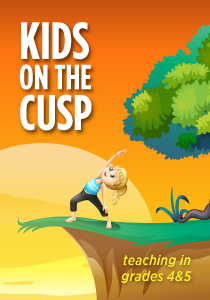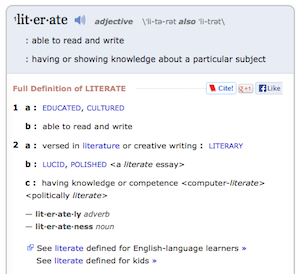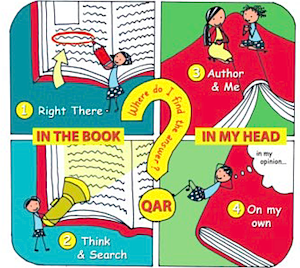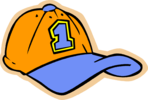Using QAR to Get to Know Each Other
A MiddleWeb Blog

While it would be great to have more flexibility within my schedule, I realize it is a practice that may be necessary when trying to schedule gym, music, art, academic resource support classes, speech and occupational therapy, in-class support schedules, and various and sundry other components that make-up the chaos theory that is a necessary evil in public education.
We do our best to accommodate the needs of each child. It’s a more complicated issue than I understood it to be years ago, when I felt pigeon-holed into planning instruction based on time slots.
There really can be a great deal of flexibility, if I apply the principles I try to teach my students when I encourage them to “think outside the box.” I have to get out of that box too. I’ve been asking myself, What are some truly effective mini-lessons (and graphic organizers to enhance them) that I can use to help my students become more literate members of society?
I have a strong support system. My district is doing its best to provide us with training in these practices. Money is always an issue, but they’ve asked us to do the best we can to wear our literacy caps, to model good reading, as opposed to “teaching reading skills,” and to familiarize ourselves with a philosophical method of instruction that will help us develop literacy in our learners. “Philosophical method” smells like an oxymoron, but I’m a fan of “jumbo shrimp.”
Literacy & Literate

These definitions come from the same dictionary, yet the latter has a significantly more detailed, expanded-upon definition. It reminds me of today’s education practices, of the conversations being batted around about the importance of teaching phonics skills vs. the emphasis needed on developing critical thinking skills in young readers.
Both definitions — the simplistic identification of the ability to actually read and write and the more complex definition that’s reflective of the literacy philosophy that my school district adopted last year — are needed. Philosophy isn’t an activity to do with the kids, but creative methods are needed to illustrate the philosophy of reading for my students.
Philosophy begins with the search for greater wisdom, greater knowledge. It can also be thought of as a particular system of principles for the conduct of life, or in this educator’s case, the conduct of teaching reading, social studies, science, and math, to name a few.
QAR Philosophy Method
Toward the end of last year, I was introduced to the QAR Strategy. One of my colleagues was conducting a grade-level workshop, and she introduced this technique in connection with fiction and non-fiction texts.

It got me thinking. If we were going to incorporate a new philosophy about reading, why couldn’t I incorporate a new way of using QAR?
I am calling it the QAR Philosophy Method. It’s an approach to getting to know each other a little bit better as we start our year. Maybe the QAR Philosophy Method will help the kids develop a mindset to look more carefully at each other, much like they would analyze a story. Each child is a story, in and of themselves.
For example:
QAR Introductions
We broke down the four types of questions used in the QAR Philosophy Method last week and came up with some examples for each:
“Right There” Questions:
• Are you a boy or a girl?
• What color are your eyes?
• What color is your hair?
Those were simple. The answer to these types of questions is directly observable in the person I am speaking with.
“Think and Search” Questions (wherein the answer may be found through observable clues):

• Are you an organized or disorganized person? A quick peek in a desk can provide important evidence.
“Author and You” Questions (in which there may be no easily “observable” answer, but clues we can gather from our own experiences and observations):
• What are some of your hobbies or interests? In class, we noticed that our nametag collages provided many clues about shared interests and what we can infer about each other, in addition to a direct response elicited from our new acquaintance. We noticed we had a lot in common.
• Do you have brothers or sisters who drive you crazy? We found out from listening to each other that we all have people in our family who we love AND who drive us crazy at times.
“On My Own” Questions (These are questions we wonder about privately at first – questions whose answers will be revealed as our year progresses and we get to know each other better):
• Why does the kid sitting across from me never raise his hand to answer questions? Is he shy? Is he nervous?
• Does the girl at the next table get nervous about math? I wonder if she’s scared she won’t understand the math too?
• Do any of the other kids feel uncomfortable when they see someone being mean to someone else? Do they feel the same way I do?
Simple tools
SchoolRise Enlightened Teaching offers that, “Teachers can lose balance even within a so-called balanced curriculum if strategies are overemphasized rather than taught as simply tools for learning, literary understanding and appreciation, and personal growth.” (“Accessible Comprehension Instruction Through QAR”)
This year, some of the first tools I can give my students are tools that involve analyzing their own curiosity and individual relationships with learning…and with each other. Maybe I can continue to incorporate the QAR Philosophy Method. One simple tool to help them do much more than just read and write…






























